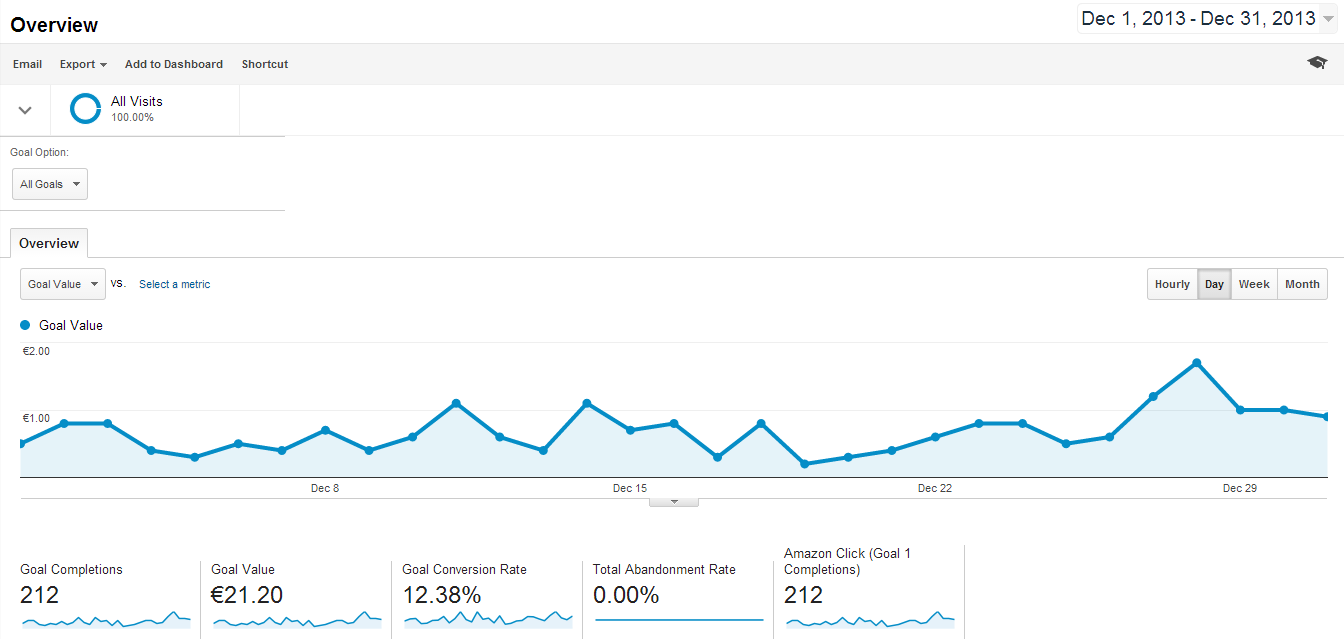Discover What Data Is Google Analytics Goals Unable to Track
Discover What Data Is Google Analytics Goals Unable to Track
Blog Article
Unveiling the Blind Spots: Recognizing What Google Analytics Goals Can not Determine
In the realm of electronic analytics, Google Analytics stands as a powerful tool for tracking and examining on the internet customer interactions. In the middle of its durable capacities, there exist blind areas that commonly avert measurement. what data is google analytics goals unable to track. Recognizing what Google Analytics objectives can not determine is crucial for acquiring a comprehensive view of user habits and engagement. As we dive right into the complexities of these unseen areas, we discover a complicated web of undiscovered areas that hold useful understandings right into individual actions and motivations, tough conventional knowledge and clarifying the limitations of our data-driven understanding.
Customer Habits on External Operatings Systems
Understanding just how customers interact on exterior platforms is critical for optimizing on the internet approaches. Outside systems, such as social media networks, reference internet sites, and online discussion forums, play a significant role in driving website traffic to a company's site. By assessing user actions on these systems, services can acquire useful insights right into the performance of their marketing initiatives and the preferences of their target market.
One key element of user behavior on exterior platforms is the recommendation resource. By tracking where the individuals are coming from, businesses can determine which systems are driving the most traffic to their internet site. This information can help firms allocate their resources better, concentrating on the platforms that produce the most effective outcomes.

Offline Interactions and conversions
Analyzing individual behavior on outside systems gives important understandings right into on-line techniques; however, taking into consideration offline conversions and communications is equally imperative for an extensive understanding of a firm's general performance. Offline conversions, such as in-store purchases or phone questions, play a significant function in lots of services' success.

Attribution Beyond Last Click
When delving right into the world of electronic marketing analytics, it becomes necessary to look beyond the single touchpoint of the last click for a more extensive understanding of acknowledgment. While Google Analytics provides useful insights right into individual habits, depending entirely on last-click acknowledgment can be limiting - what data is google analytics goals unable to track. Acknowledgment versions that exceed the last click use a much more nuanced sight of the customer journey, taking into consideration all the touchpoints that cause a conversion
Acknowledgment past the last click allows marketing experts to appoint credit history to numerous interactions along the conversion course, providing a more clear image of the effectiveness of various advertising and marketing networks. By checking out multi-touch acknowledgment models such as straight, time degeneration, or position-based acknowledgment, organizations can better allocate their advertising and marketing spending plans and enhance their techniques for maximum effect.
Understanding the influence of each touchpoint in the conversion procedure is essential for making educated choices and making the most of ROI. By embracing attribution past the last click, businesses can get deeper insights into customer actions and customize their advertising efforts better.
Cross-Device and Cross-Browser Tracking

In a similar way, cross-browser monitoring complements cross-device tracking by recording user habits as they switch in between various web internet browsers. Understanding how individuals connect with internet sites on different web browsers can help marketing experts maximize their on the internet experiences to make sure uniformity and performance across various systems.
Qualitative Data and Customer Intent
Comprehending customer intent with qualitative data evaluation is essential for creating targeted electronic advertising and marketing methods that resonate with the demands and choices of the target market. Qualitative try this website information supplies understandings right into the 'why' behind individual actions, clarifying inspirations, feelings, and choices that quantitative data alone can not capture. By analyzing customer comments, remarks, and interactions, marketing professionals can uncover valuable information concerning customer intent, enabling them to customize their messaging, web content, and offerings to much better straighten with what their target market is seeking.
Qualitative information likewise helps in comprehending the context in which individuals involve with an internet site or application. This contextual understanding enables marketing experts to create more customized and pertinent experiences, ultimately driving greater involvement and conversion rates. By delving into customer intent with qualitative information analysis, companies can gain a deeper understanding of their target market, resulting in much more efficient advertising and marketing strategies that meet users' requirements and assumptions.
Conclusion
Finally, Google Analytics goals have restrictions in determining user actions on outside platforms, offline conversions, attribution past last click, cross-browser and cross-device monitoring, and qualitative data related to customer intent. what data is google analytics goals unable to track. It is crucial for services to be knowledgeable about these dead spots in order to supplement their information analysis with other devices and methods to acquire an extra thorough understanding of their audience and improve their general electronic marketing methods
By assessing individual actions on these systems, companies can get valuable understandings into the performance of their advertising and marketing efforts and the choices of their target audience.
Assessing customer behavior on outside systems offers useful insights right into on-line approaches; however, considering offline conversions and communications is just as imperative for a comprehensive understanding of a company's general performance.In digital advertising analytics, relocating past last-click attribution to explore cross-device and cross-browser tracking is crucial for obtaining an all natural understanding of individual communications throughout different systems and devices. By analyzing individual comments, article source remarks, and interactions, marketers can uncover useful information regarding user intent, allowing them to tailor their messaging, content, and offerings to better align with what their target market is looking for.
By delving into individual intent via qualitative information analysis, companies can gain a deeper understanding of their target audience, leading to much more effective advertising approaches that fulfill customers' assumptions and demands.
Report this page